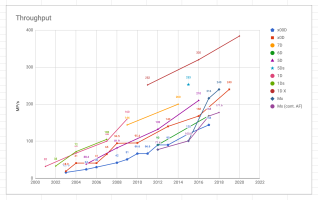===
In terms of our INTERNAL printing of posters, we usually PRINT at 2400 dpi (individual dots per inch) which is about 600 ppi (i.e. CMYK pixel groupings per inch). Since we usually shoot using a 1dx Mk2 for up to 8x10 inch or a 100 megapixel Hasselblad that works out to about 150 ppi if we scale it to 19x13 inches.
Since we ALSO use a FRACTAL SCALER-based rasterizer on our print jobs, the combination of fractal scaling and error diffusion makes our photos look great even when printed out at 48 inches by 36 inches and larger.
THE KEY ISSUE when printing is NOT the actual dpi of the source camera image but rather the QUALITY of your print rasterizer which SHOULD USE Fractal Scaling and/or Stochastic Error Diffusion.
MOST newer Epson or Canon pro-level printers will have 2400 dpi and ERROR DIFFUSION settings which you should turn ON for best photo quality output!
If you have the TIME, using an external software-based image scaler/rasterizer is best, but modern printers now give you 90% of that sort of quality within the printer of itself using the built-in error diffusion algorithms.
One thing I have noticed, is you MUST USE a colour-matching system (i.e. Datacolor SpyderX Elite is one of the best monitor calibrators!) so that your printout will MATCH what is displayed on your monitor within your image processing and publishing program.
Every morning I colour match my monitors and printers for BOTH video and print uses and save a preset so I can switch between the YCbCr video-centric display modes and print-centric CMYK modes. Since monitors have COLOUR DRIFT over a time period as short as even a few hours, I usually do it in the morning.
Not everyone will need that sort of colour accuracy, but by buying even the cheaper Spyder colour calibrators, your printouts will match your monitors pretty closely!
---
And while the point of high resolution is for allowing more cropping options and better print resolution, it's NOT always necessary since MANY publications are WEB-specific which means for 8.5 inches by 11 inches PDF files, you can get away with a full page portrait resolution as little as 2000 by 1500 pixel or about 180 dpi! That means your camera really needs to be at a minimum of maybe 6 megapixels to give you enough room to do a proper downsample and crop for web-based publishing!
In my opinion, two of the BEST cheaper MILC cameras for doing that sort of web-publishing are the Canon M-50 and the Sony A6500. The quality and resolution are MORE THAN ENOUGH for web and the price is right! If you are JUST doing web photos and maybe smaller 1920 by 1080 embedded videos then the $799 Canon M50 is a good start.
If you're doing BOTH print AND vlogging then the $1600 Sony A6500 is much better for that!
.

